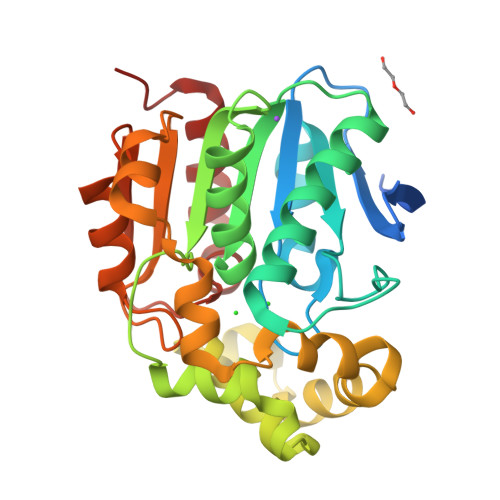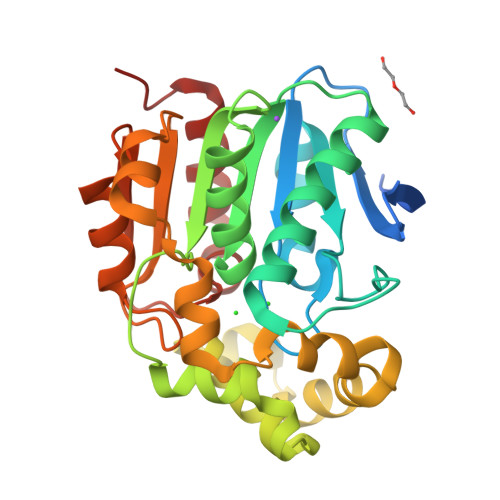Single residues dictate the co-evolution of dual esterases: MCP hydrolases from the alpha / beta hydrolase family.
Alcaide, M., Tornes, J., Stogios, P.J., Xu, X., Gertler, C., Di Leo, R., Bargiela, R., Lafraya, A., Guazzaroni, M.E., Lopez-Cortes, N., Chernikova, T.N., Golyshina, O.V., Nechitaylo, T.Y., Plumeier, I., Pieper, D.H., Yakimov, M.M., Savchenko, A., Golyshin, P.N., Ferrer, M.(2013) Biochem J 454: 157-166
- PubMed: 23750508
- DOI: https://doi.org/10.1042/BJ20130552
- Primary Citation of Related Structures:
4I3F - PubMed Abstract:
Several members of the C-C MCP (meta-cleavage product) hydrolase family demonstrate an unusual ability to hydrolyse esters as well as the MCPs (including those from mono- and bi-cyclic aromatics). Although the molecular mechanisms responsible for such substrate promiscuity are starting to emerge, the full understanding of these complex enzymes is far from complete. In the present paper, we describe six distinct α/β hydrolases identified through genomic approaches, four of which demonstrate the unprecedented characteristic of activity towards a broad spectrum of substrates, including p-nitrophenyl, halogenated, fatty acyl, aryl, glycerol, cinnamoyl and carbohydrate esters, lactones, 2-hydroxy-6-oxo-6-phenylhexa-2,4-dienoate and 2-hydroxy-6-oxohepta-2,4-dienoate. Using structural analysis and site-directed mutagenesis we have identified the three residues (Ser32, Val130 and Trp144) that determine the unusual substrate specificity of one of these proteins, CCSP0084. The results may open up new research avenues into comparative catalytic models, structural and mechanistic studies, and biotechnological applications of MCP hydrolases.
Organizational Affiliation:
Spanish National Research Council CSIC, Institute of Catalysis, 28049 Madrid, Spain.





















